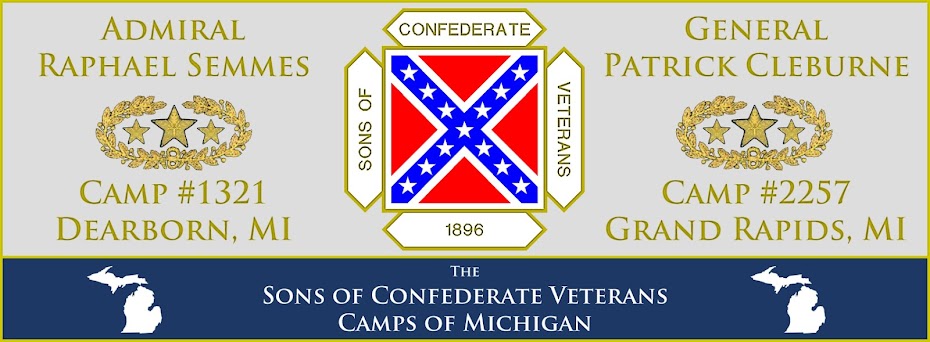Two of the participants from that battle, Major Robert A. Stiles (an artillery officer) & Pvt. William M. Dame (1st Company, Richmond Howitzers), wrote books about their respective experiences in the service, and both recalled in particular about one young artilleryman who's words & actions would remain with them the rest of their days.
Maj. Stiles recalls...
"There was a tall, black haired, pale faced boy in the company named Cary Eggleston. He was No. 1 at the third gun; said to be the best No. 1 man in the battery, and ... known to be a fellow of most gallant spirit. He was one of that small class of men who really loved a fight for it's own sake. He was not yet fully developed, and ordinarily appeared rather gangling and loose-jointed, but it required only the thrill of action to inspire him and make his movements as graceful as they were powerful and effective."Pvt. Dame remembered Eggleston the exact same way...
"[Cary was] always bright, full of fun in camp, and on the march, he was at the gun in action, the best No. 1' I ever saw. One of the few men I ever knew who really seemed to enjoy a fight."Though Stiles and Dame both tell what happened next, Dame was likely a witness from the start...
Pvt. Dame - "Cary ... had his arm shattered, and almost cut away from his body, by a fragment of shell. He quietly handed his rammer to John Ayres, who that instant came up to the gun, and said, 'Here Johnny, you take it and go ahead!' Then, gripping his arm with his other hand, partly to stop the fast flowing blood, he turned to his comrades, and said in his jocular way, 'Boys, I can never handle a spongestaff any more. I reckon I'll have to go to teaching school.' Then he stood a while, looking at the men working the gun. They urged him to go to the rear; he would not for a while. When he consented to go, they wanted to send a man with him, but he refused, and walked off by himself."
Maj. Stiles - "I had been with another of the batteries in the battalion, and hearing the rapid firing around the howitzer position, was galloping down there, when I saw Eggleston walking out. He had his unwounded side toward me, and I called to him to know where and why he was going. He answered by turning his other side and holding up the stump, from which his shattered arm hung by a ragged shirt sleeve, and torn tendon, and then he shook the clenched fist of his sound arm toward the Federal lines, shouting to me that he would soon be back to fight them with that."
Pvt. Dame - "As [Cary] passed back, an infantry officer, seeing what an awful wound he had, and the streaming blood, insisted that one of the men should go and help him to the hospital. 'No,' he said; 'I'm all right, and you haven't got any men to spare from here.' So, holding his own arm, and compressing the artery with his thumb, he got to the hospital.John Cary Eggleston was a Private in the 1st Company, Richmond Howitzers (also known as Anderson's Virginia Light Artillery Company). He was only about 18 years old when he enlisted to serve at Richmond in 1861. Official records list him as having died on May 27 from his wounds. Pvt. Eggleston is buried at the Spotsylvania Confederate Cemetery. [You can pay your respects to Pvt. Eggleston online by clicking HERE to visit his Find-A-Grave memorial page.]
"His arm was amputated, and a few days after, as the battery passed through Spottsylvania Court House, we went by the Court House building, used as a hospital, where he lay on the floor, and bade him 'goodbye.' He was just as cheerful and bright as ever, and full of eager interest in all that was going on. [Eggleston] said since he had time to think about it, he believed he could handle a sponge-staff with one hand; was going to practice it soon as he could get up, and would be back at his post before long.
"The next day, the brave young fellow died. The 'Howitzers' will always remember him tenderly. No braver, cooler warrior ever lived! ... His bearing, when he was wounded, was simply heroic. No wounded knight ever passed off his last battlefield in nobler sort. All honor to his memory!"
Past SCV Historian-in-Chief, James W. Thompson, once wrote that "it was men like Cary Eggleston who made of the Confederate soldier a figure never surpassed in the annals of military history." It is this author's opinion that Pvt. Eggleston's story is one that should suffice to answer anyone who wonders why we celebrate Confederate History Month, why we are proud to display the flag which Pvt. Eggleston served and died under, and why we must hope to have the same unconquerable spirit when in times like these - times when such a noble and honorable heritage is under constant attack.
Rest well, Pvt. Eggleston... We salute you.
DEO VINDICE!
- Jonathan McCleese
Sergeant-at-Arms
Admiral Raphael Semmes Camp #1321
Army of Tennessee
Sons of Confederate Veterans

No comments:
Post a Comment
Comments and questions are most welcome, but keep in mind that this is not a forum for debate. Keep all comments respectful, clean (no "foul language"), and on topic of the post. If you need information about the camps, the SCV, or how to join this organization, please refer to the links provided in the sidebar on the right of the page. Thanks!